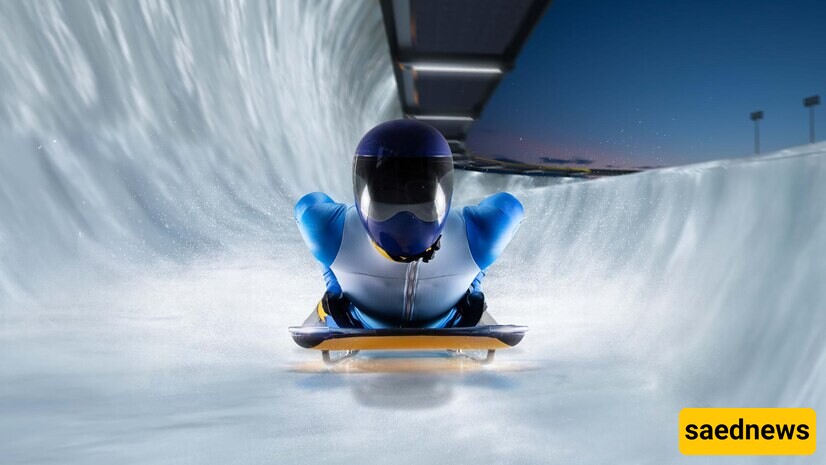SAEDNEWS: Luge is a winter sport performed using a single or double sled. A luger lies on their back on the sled and leans backward to shift their weight.


Luge is a winter sport conducted with single or double sleds. The luger lies on their back on the sled and shifts their weight backward. The sled used in this sport lacks brakes or any special steering mechanisms. Lugers steer or brake using two metal pieces attached beneath their shoes. Single sleds weigh 21–25 kilograms, while double sleds weigh 25–30 kilograms.
This sport, like bobsledding and skeleton, takes place on a winding track, typically 1,000 meters long with 12 curves. The sleds can reach speeds of up to 140 kilometers per hour, making the sport both thrilling and dangerous. Luge competitions have been part of the Winter Olympics since 1964.
The first luge competition took place in the 1870s. Teams consist of one or two members, and the sport's primary equipment is the specialized luge sled. Events occur on specific winding tracks. The Luge Olympic tradition began in 1936 in Innsbruck and continues to this day.
Like many winter sports, luge has its risks. Most injuries involve bruises, fractures, or concussions, though fatalities have occurred. For instance, during the 2010 Winter Olympics in Whistler, British Columbia, Georgian luger Nodar Kumaritashvili had a fatal accident in his final practice run. The International Luge Federation concluded the accident resulted from a steering error, not track conditions. However, adjustments were made to the track before reopening.
Luge requires athletes to have excellent physical and mental preparation for maintaining balance. Physically, lugers need strong neck, upper body, abdominal, and thigh muscles. They undergo strength training to endure the high G-forces experienced during sharp turns at high speeds. Since sleds provide minimal protection aside from a helmet and visor, athletes must withstand physical impacts in case of mistakes on the track.
Luge competitions are held across six disciplines:
Men’s singles
Men’s doubles
Women’s singles
Women’s doubles
Women’s team events
Men’s team events
These disciplines are organized for various age groups, including juniors, youth, and adults.
Luge tracks are usually natural, such as mountain roads and paths, while artificial tracks are prohibited. The track surface is naturally frozen, and lugers rely on braking and steering with their hands and feet. Sleds themselves lack built-in brakes or steering systems.
To navigate, lugers use their hands and feet strategically. Braking is often needed before curves and is done using metal plates embedded in their shoes. Athletes adopt a flat and aerodynamic position on the sled, keeping their heads low to minimize air resistance. Steering is achieved mainly by shifting body weight: leaning to the right to turn left and vice versa. Precision involves a combination of body weight and shoulder movements.
Handles on the sled allow for minor adjustments. A successful luger maintains focus and calmness while traveling at high speeds.

